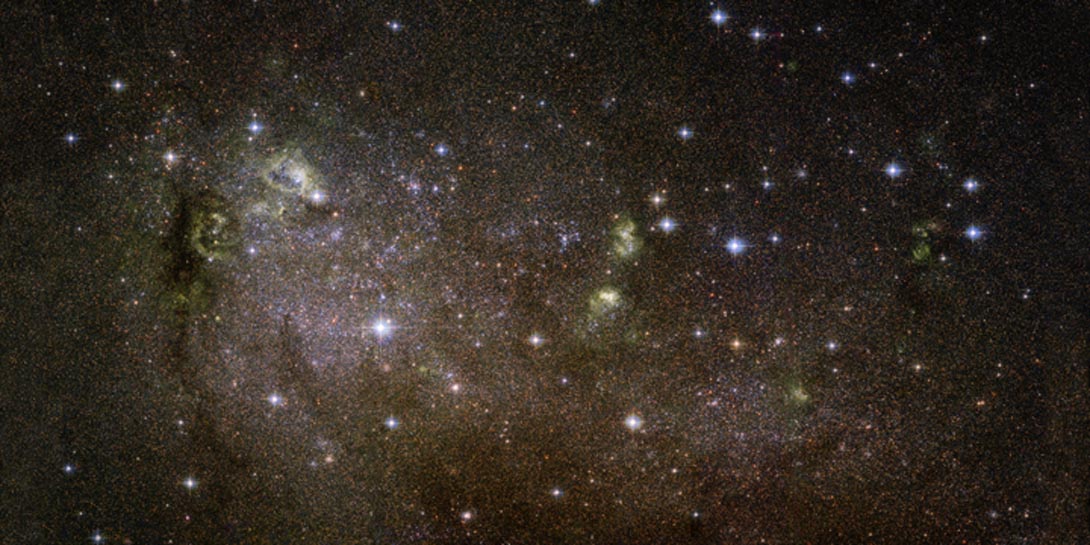
Irregular Galaxy
RA 0h 20m 19.53s Dec 59° 18' 27.50"
Cassiopeia
2 million light years
10.4
6.8 × 5.9 arcmin
5.10 x 2.87 arcminutes
North is 59.7° right of vertical
NASA, ESA and F. Bauer
June 17, 2019
ABOUT THIS IMAGE:
This image shows an irregular galaxy named IC 10, a member of the Local Group - a grouping of over 50 galaxies within our cosmic neighborhood that includes the Milky Way.
IC 10 is a remarkable object. It is the closest-known starburst galaxy to us, meaning that it is undergoing a furious bout of star formation fueled by ample supplies of cool hydrogen gas. This gas condenses into vast molecular clouds, which then form into dense knots where pressures and temperatures reach a point sufficient to ignite nuclear fusion, thus giving rise to new generations of stars.
As
an irregular galaxy, IC 10 lacks the majestic shape of spiral galaxies
such as the Milky Way, or the rounded, ethereal appearance of elliptical
galaxies. It is a faint object, despite its relative proximity to us -
just 2.2 million light-years. In fact, IC 10 only became known to humankind
in 1887, when American astronomer Lewis Swift spotted it during an observing
campaign. The small galaxy remains difficult to study even today, because
it is located along a line-of-sight which is chock-full of cosmic dust
and stars.